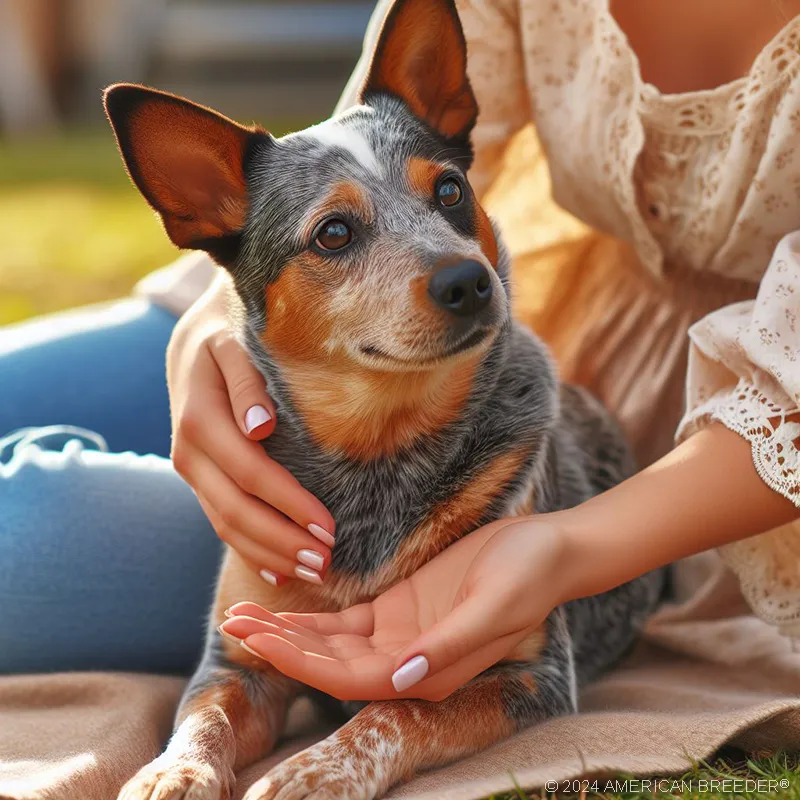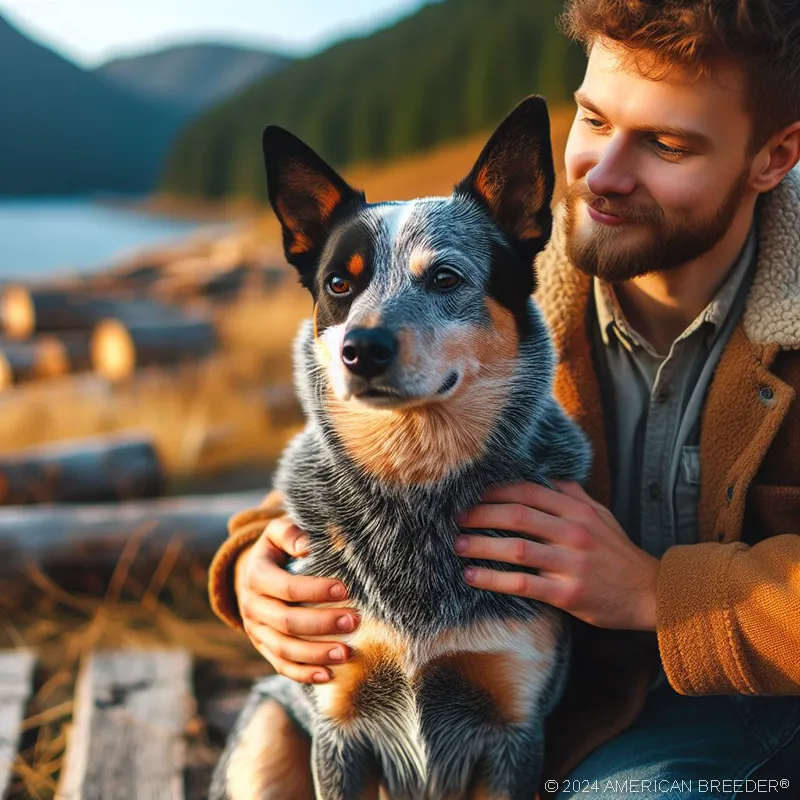Stumpy Tail Cattle Dog Guide
The Australian Stumpy Tail Cattle Dog is a remarkable and unique dog breed that has captured the hearts of many dog enthusiasts. Before choosing this breed, it is important to understand their specific needs and characteristics. However, rest assured that owning an Australian Stumpy Tail Cattle Dog can be a rewarding experience. Here are some interesting facts about this breed to pique your interest.
Appearance and Physical Characteristics
The Australian Stumpy Tail Cattle Dog is a medium-sized breed with a strong and muscular build. They typically stand between 17 and 20 inches (43-51 cm) at the shoulder and weigh around 35 to 50 pounds (16-23 kg). One of their most notable physical features is their stumpy tail, which is naturally short or bobbed.
In terms of coat type, they have a short and dense double coat that provides protection from the elements. The coat can come in various colors, including blue, red, or speckled. Some dogs may also have markings on their face and body, adding to their distinctive appearance.
 Breed Background and Country of Origin
Breed Background and Country of Origin
The Australian Stumpy Tail Cattle Dog traces its origins back to Australia, where they were developed to assist farmers in herding cattle over long distances. This breed played a significant role in Australian agriculture, proving to be highly skilled working dogs. Their strong herding instincts and intelligence made them indispensable in managing livestock.
While not necessarily holding specific cultural significance, the Australian Stumpy Tail Cattle Dog has become an icon of Australian rural life, and their contributions to the agricultural industry are highly valued.
Personality and Temperament
Australian Stumpy Tail Cattle Dogs are known for their intelligence, loyalty, and strong work ethic. They are diligent and thrive on having a job to do. This breed is highly energetic and requires regular mental and physical stimulation to stay happy and healthy.
When properly socialized, they can be affectionate, gentle, and friendly towards their family members. They are known to be great companions and form strong bonds with their human counterparts. Additionally, their playful nature makes them a great fit for families with children. However, due to their herding instincts, they may try to herd and nip at the heels of small children during play.
While they are generally good with other dogs and cats, early socialization and proper introductions are essential to ensure positive interactions. They can also exhibit protective tendencies towards their family, making them excellent watchdogs.
 Recognition by AKC (American Kennel Club)
Recognition by AKC (American Kennel Club)
The Australian Stumpy Tail Cattle Dog was officially recognized by the American Kennel Club (AKC) in [Year]. This recognition is significant as it validates the breed's standards and allows them to participate in various AKC-sanctioned events and competitions. It also helps to preserve the breed's integrity and promote responsible breeding practices.
VI. Training Suggestions
Australian Stumpy Tail Cattle Dogs are highly intelligent and eager to please, making them trainable with the right approach. Positive reinforcement techniques, such as rewards-based training and consistency, work well with this breed. They respond positively to praise, treats, and play as motivation.
It's important to note that this breed may exhibit independent thinking and a strong desire to be in control. As a result, early socialization and consistent, firm, yet gentle training from a young age are crucial to ensure they grow into well-behaved adults. Their herding instincts may lead them to try to herd other animals or even family members, so teaching appropriate boundaries and redirecting their focus is essential.
Care Notes
Grooming requirements: The Australian Stumpy Tail Cattle Dog has a low-maintenance coat that only requires occasional brushing to remove loose hair and keep it looking tidy. They are moderate shedders, so regular brushing will help minimize shedding. Additionally, they should be bathed as needed, typically every few months, or when they get dirty.
 Exercise needs: The Australian Stumpy Tail Cattle Dog is an active and energetic breed that requires regular exercise to keep them physically and mentally stimulated. Daily walks, playtime, and interactive activities such as agility or obedience training are highly recommended. Providing them with ample opportunities to run and play in a secure, fenced area is ideal.
Exercise needs: The Australian Stumpy Tail Cattle Dog is an active and energetic breed that requires regular exercise to keep them physically and mentally stimulated. Daily walks, playtime, and interactive activities such as agility or obedience training are highly recommended. Providing them with ample opportunities to run and play in a secure, fenced area is ideal.
Health considerations: Like all dog breeds, Australian Stumpy Tail Cattle Dogs are prone to certain health issues. Some of the potential health risks include hip dysplasia, progressive retinal atrophy, deafness, and elbow dysplasia. Regular veterinary check-ups, a balanced diet, exercise, and responsible breeding practices can help minimize the risk of these conditions.
Feeding guidelines: It is important to provide your Australian Stumpy Tail Cattle Dog with a high-quality, balanced diet that meets their nutritional needs. The amount of food will depend on their age, size, activity level, and metabolism. It is recommended to divide their meals into two or three portions to prevent bloat, a condition that can affect deep-chested breeds.
Shedding: Australian Stumpy Tail Cattle Dogs have a moderate shedding level. While they do shed throughout the year, regular brushing can help remove loose hair and reduce the amount of hair around your home. It is important to note that no dog breed is truly hypoallergenic, as allergies can be triggered by dander and saliva rather than just shedding.
Tendency to drool: Australian Stumpy Tail Cattle Dogs are not known for excessive drooling. They typically have average saliva production, which means you shouldn't expect them to leave excessive drool on surfaces or your clothes.
Snoring tendencies and noise level during sleep: Australian Stumpy Tail Cattle Dogs do not have a reputation for excessive snoring. While individual dogs may have their unique sleep habits, loud snoring is not commonly associated with this breed.
Loudness level of bark and tendency to bark: Australian Stumpy Tail Cattle Dogs have a moderate tendency to bark. They are alert and protective, which may lead them to vocalize when they perceive a threat or unusual activity. Early training and socialization can help manage their barking behavior and teach them appropriate times to vocalize.
Compatibility with specific living arrangements or environments: Australian Stumpy Tail Cattle Dogs are adaptable and can thrive in various living arrangements, including apartments, as long as they receive sufficient exercise and mental stimulation. However, due to their energetic nature, they are best suited for homes with a securely fenced yard or access to outdoor spaces where they can burn off energy.
Conclusion
In conclusion, the Australian Stumpy Tail Cattle Dog is a wonderful breed with unique characteristics. They are intelligent, loyal, and energetic, making them a great choice for active individuals or families who can provide them with the exercise and mental stimulation they need. However, owning this breed requires commitment, responsible ownership, and understanding of their specific needs. It is important to continue researching and seeking guidance from breed experts to ensure a happy and fulfilling relationship with your Australian Stumpy Tail Cattle Dog.
Australian Stumpy Tail Cattle Dog Quick Reference Guide
 Breed Background: Origin: Australia | Breed Purpose: Herding | AKC Class: Herding | Year Recognized by AKC: Not recognized
Breed Background: Origin: Australia | Breed Purpose: Herding | AKC Class: Herding | Year Recognized by AKC: Not recognized
Appearance: Size: Medium | Weight: 35-50 pounds | Coat Type: Short and dense | Colors & Patterns: Blue, red, speckled, or mottled | Distinctive Features: Tailless or short tail, alert expression
Temperament: Energy Level: 5 | Loyalty: 5 | Friendliness to Pets: 3 | Friendliness to Strangers: 2 | Trainability: 4 | Playfulness: 4 | Frequent Barker: 4 | Chase Instincts: 5 | Sense of Smell: 3 | Drive to Hunt: 4
Health & Care: Health Issues: Hip dysplasia, deafness, eye conditions | Lifespan: 12-15 years | Grooming Difficulty: Low | Exercise Needs: High
Socialization: Interaction with Children: Good with early socialization | Interaction with Pets: Can be dominant, best with early exposure | Interaction with Strangers: Reserved and cautious | Elderly Compatibility: Yes, with proper exercise | Ease of Training: Moderate
Suitable Living Arrangements: Apartment: No | House: Yes | Rural Area: Preferred | Yard Size Requirements: Medium to large yard
Training & Obedience: Trainability: 3 | Intelligence: 4 | Obedience: 4 | Problem-Solving: 4 | Easily Stimulated: 4 | Focus Level: 3 | Easily Distracted: 3
Financial Planning: Typical Price Range: $600 - $1,500 | Initial Expenses: Puppy essentials, training | Ongoing Annual Expenses: Food, veterinary care
Breeding: Reproductive Maturity: 18-24 months | Litter Frequency: Once per year | Litter Size: 4-8 puppies | Stud Cost: $500 - $1,000 | Breeding Challenges: Maintaining breed standards, health screenings
Did You Enjoy this Article? Share it and Help Us Spread the Word!
If you found this article helpful, we'd appreciate it if you could share it with your friends or link to it from your website, blog, or group! You can also use the convenient social share tabs on the left side of the screen to instantly share this page to your social media feed. For more ways to support and promote the American Breeder Community, visit our Share & Promote Together page for social media posts and memes you can copy and share. Your support means the world to us!
Disclaimer: The information provided in this article is for general informational purposes only and does not constitute legal, medical, financial, or professional advice. While we strive for accuracy, we make no representations or warranties regarding the completeness, accuracy, reliability, or suitability of the information. Please consult with a professional before making decisions based on the content provided. American Breeder Inc. assumes no responsibility for any errors or omissions or for the results obtained from the use of this information.


